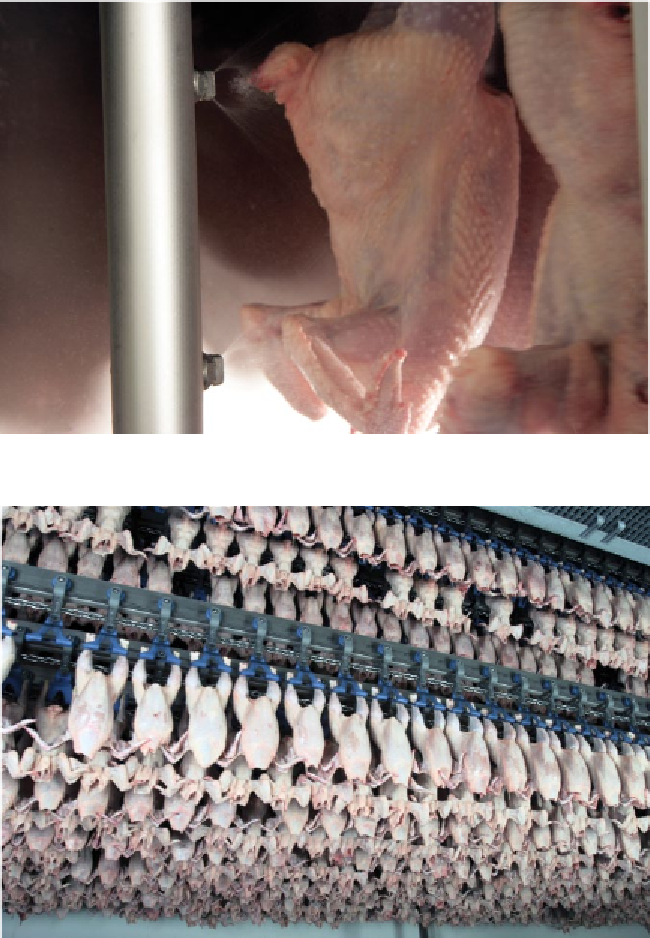Agriculture Reference
In-Depth Information
Figure 10.12
Moistener spray cabin chilling (Reproduced with permission from Stork Poulty Processing, Boxmeer, The Netherlands).
Figure 10.13
Air chilling (Reproduced with permission from Stork Poulty Processing, Boxmeer, The Netherlands).
present a particular hazard owing to the risk of leakage of
faeces from the vent and, if evisceration is carried out in a
kitchen, the risk of faeces or intestinal contents from rup-
tured intestines cross-contaminating other foods.
The type of chilling used can have an effect on the
type and quantity of microbial contamination of the end
product. Water chilling shows an increase in the inci-
dence of
Salmonella
against air chilling but decreased
incidence of campylobacter. Continuous, in-line, immer-
sion chilling is still the most widely used method in
many countries. Carcases move through a counterflow
current of water in a state of constant agitation so that
they are constantly moving into cleaner water. This
washing effect also removes numerous organisms
from both the inner and outer surfaces of the carcases.
There may be deleterious effects if there is a signifi-
cant build-up of blood and carcase material or a rise
Chilling
In many plants, the high rate of processing (7000-1100
birds/hour) is such that there is little loss of heat from the
carcase before it reaches the chilling stage, and average car-
case temperatures are frequently above 30°C. Prompt and
efficient chilling of the bird is essential to delay the growth
of psychotropic spoilage bacteria and prevent any increase
in micro-organisms of public health significance.

